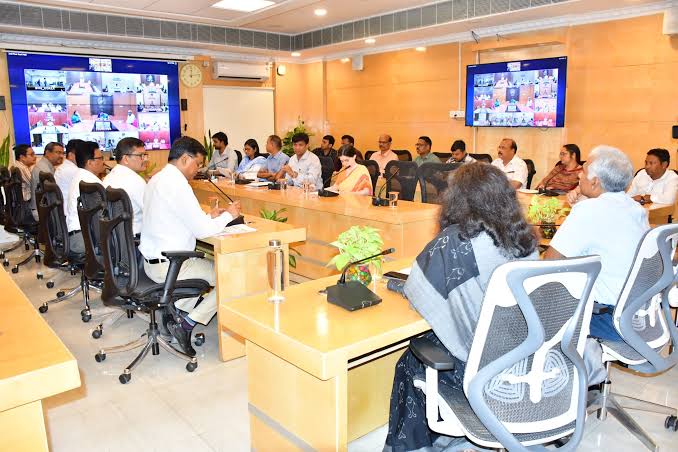Odisha Achieves Record Rabi Paddy Procurement of 19 LMT

Bhubaneswar: The Odisha government has achieved a record-breaking Rabi paddy procurement of 19 lakh metric tonnes (LMT) for the 2024–25 season, significantly surpassing its initial target of 14 LMT. The milestone was revealed during an inter-ministerial review meeting held on Monday at Lok Seva Bhawan, chaired by Deputy Chief Minister Kanak Vardhan Singh Deo.
This year’s procurement figure also marks a substantial increase from last year’s 12 LMT, reflecting the state’s continued commitment to supporting farmers. Officials attributed the achievement to proactive policies and the highest paddy procurement price in India—Odisha offers Rs 3,100 per quintal under the ‘Samruddh Krushak Yojana, which includes the Minimum Support Price (MSP) and additional input assistance.
To promote transparency and prevent illegal paddy inflow from neighboring states, the government announced the introduction of an e-KYC system for farmers. This digital verification process aims to ensure only genuine beneficiaries receive procurement benefits. A new policy on paddy procurement is also being formulated to enhance efficiency and accountability.
The meeting also highlighted Odisha’s total paddy production for the year, which stands at 93 LMT from both Kharif and Rabi seasons. Of this, approximately 63 LMT of rice is expected to be processed, far exceeding the state’s domestic requirement of 27 LMT. The surplus has led the government to explore alternative uses for the excess paddy, such as producing 2G ethanol from paddy straw and broken rice for ethanol plants within the state.
Deputy CM Singh Deo was joined by Revenue and Disaster Management Minister Suresh Pujari, Food Supplies and Consumer Welfare Minister Krushna Chandra Patra, and Commerce and Transport Minister Bibhuti Bhushan Jena. Senior officials, including Sanjay Kumar Singh, Principal Secretary, Food Supplies and Consumer Welfare, Sudarshan Chakraborty, Managing Director, Supply Corporation, and Shubham Saxena, Director, Agriculture and Food Production, were also present.
The meeting concluded with discussions on further strengthening procurement infrastructure, improving farmer outreach, and ensuring long-term sustainability in grain management.






